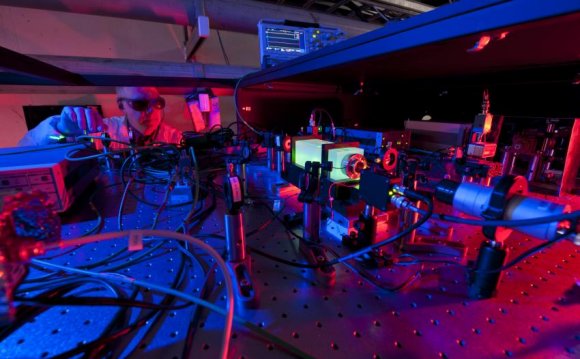
- CHAPTER 1 INTRODUCTION
One of the problems facing neural science is how to explain evidence that local lesions in the brain do not selectively impair one or another memory trace. Note that in a hologram, restrictive damage does not disrupt the stored information because it has become distributed. The information has become blurred over the entire extent of the holographic film, but in a precise fashion that it can be deblurred by performing the inverse procedure.
This paper will discuss in detail the concept of a holograph and the evidence Karl Pribram uses to support the idea that the brain implements holonomic transformations that distribute episodic information over regions of the brain (and later "refocuses" them into a form in which we re-member). Particular emphasis will be placed on the visual system since its the best characterized in the neurosciences. Evidence will be examined that bears on the validity of Pribram's theory and the more conventional ideas that images are directly stored in the brain in the form of points and edges (without any transformation that distributes the information over large regions). Where possible, the same evidence (for the visual system) will be used to evaluate both theories.
1. Holonomic theory where Fourier-like transformations store information of the sensory modalities in the spectral (or frequency) domain. The sensory stimulus is spread out (or distributed) over a region of the brain. A particular example (in the case of vision) would be that particular cortical cells respond to the spatial frequencies of the visual stimulus.
2. The more conventional theory that particular features of the untransformed sensory stimulus is stored in separate places in the brain. A particular example (in vision) would be that particular visual cortical cells respond to edges or bar widths in the visual stimulus.
It will be necessary in this report to first explain the concepts of a hologram and Fourier transforms before the physiological experiments can be understood. Bear in mind that the discursion into these other fields serves a purpose for later in the report.
Karl Pribram's holonomic theory reviews evidence that the dendritic processes function to take a "spectral" transformation of the "episodes of perception". This transformed "spectral" information is stored distributed over large numbers of neurons. When the episode is remembered, an inverse transformation occurs that is also a result of dendritic processes. It is the process of transformation that gives us conscious awareness.
Chapter 2 will outline the basic concept of a hologram and start to introduce Pribram's holonomic brain theory.
Chapter 3 will briefly describe the conventional accepted view of the pathway of neural processing (with particular emphasis on the visual system). The main computational event in this view is the generation of the action potential.
Chapter 4 will review the evidence for the alternative holonomic view. The holonomic theory is based on evidence that the main computational event of neurons is the polarizations and hyper polarizations at the dendritic membranes of neurons. The evidence will be reviewed that supports the notion that these dendritic processes effectively take something close to a Fourier transform.
CHAPTER 2 HOLOGRAMS
What is holography?
The word "holography" is derived from Greek roots meaning "complete writing". The idea is that every part of "the writing" contains information about the whole. A hologram (the material manifestation of a holograph) is a photographic emulsion in which information about a scene is recorded in a very special way. When the hologram is illuminated, you see a realistic, three-dimensional representation of the scene. If you cut the holographic photographic plate up into small pieces, the whole image can still be extracted from any of them (although with some loss of clarity). Pribram uses the term holonomy to refer to a dynamic (or changing) hologram.
The Hologram Relationship
The basic idea of a hologram can be understood without even considering the holograms found in novelty stores. The idea is simply that each part contains some information of the whole. Or stated another way, the information (or features) are not localized, but distributed. To clarify this concept, consider the following thought experiments (demonstrations). As will be demonstrated, light is in the holographic domain before it gets transformed (focused) by a lens.
Demonstration #1. Remove the converging lens in a slide projector that forms the image. Place a slide in the projector and project the light onto a screen. No image will form. Technically, the light incident on the screen is in a holographic form. Each point on the screen is receiving information from every point from the slide. If a converging lens is placed at a location between the screen and the slide projector an image can be formed on the screen. The lens can now be moved to new locations in a plane cutting through the light path to the screen and in each case a complete image is formed (Taylor, 1978).
Demonstration #2. The above principle can be demonstrated with using a camera. Consider taking pictures of an object (for example...








